Your Strategic Partner for
Unlocking China's Sourcing Potential
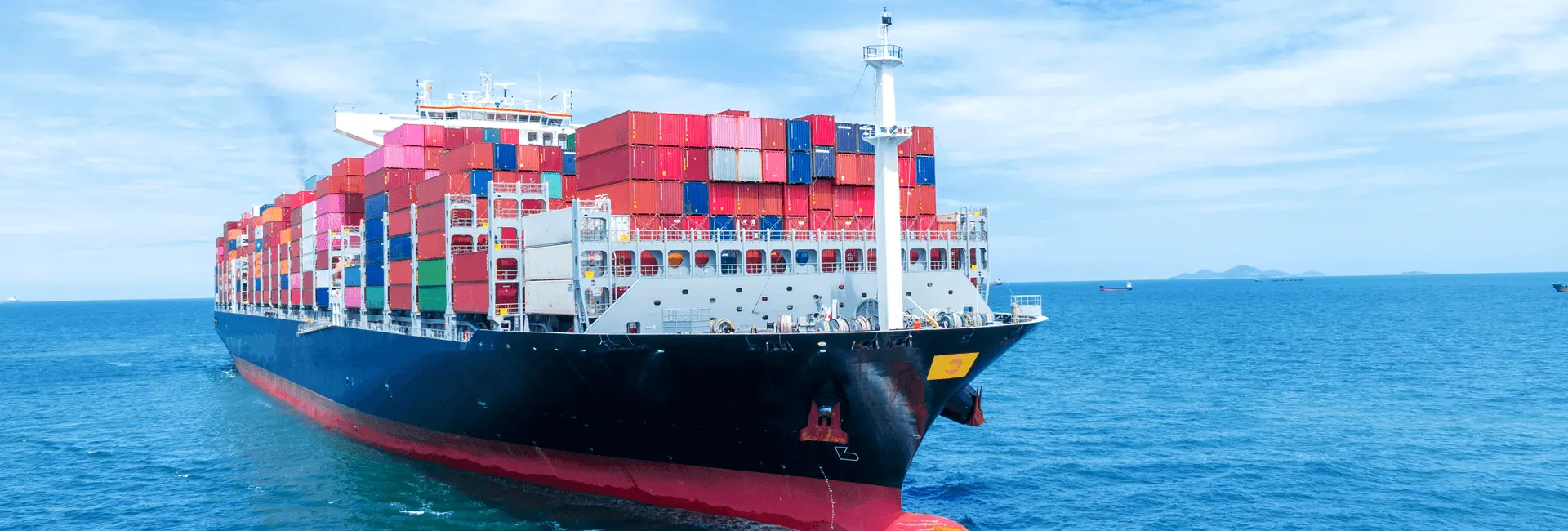
Sea Freight Shipping from China
Now, you have a trusted partner that simplifies the process, offers FCL and LCL shipping services, and provides all-in-one solutions tailored to your unique needs.
The Solution for Unlocking China's Potential
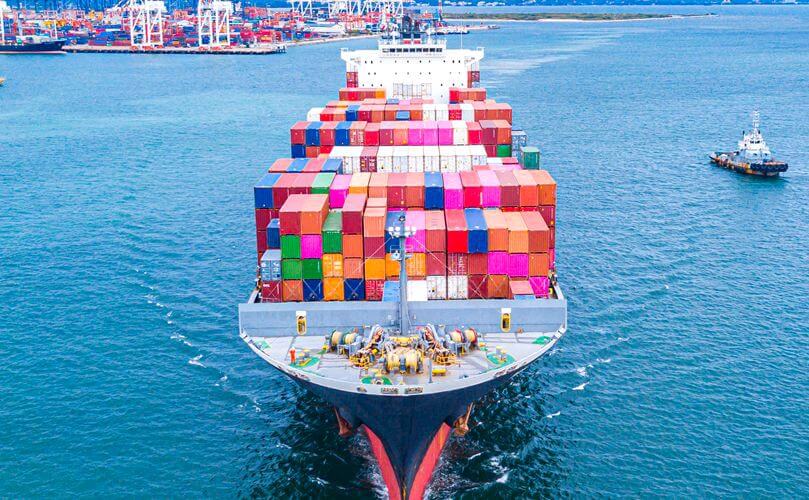
Traditional FCL and LCL Services
We offer FCL and LCL for your Sea freight from China at unbeatable rates.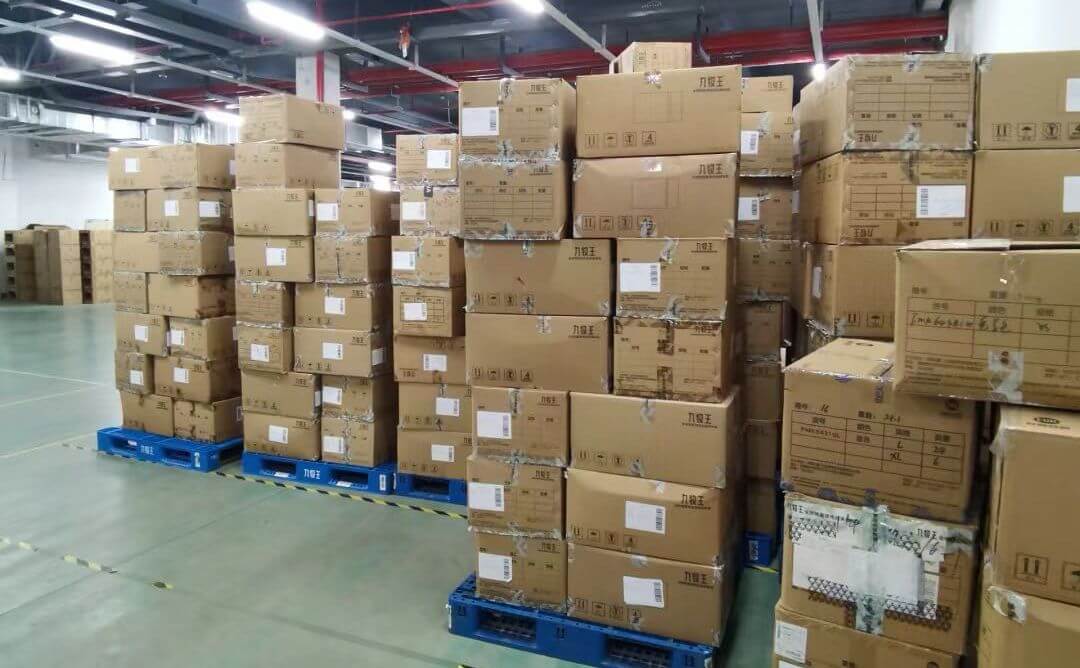
Multi-Supplier Consolidation
We optimize your company's supply chain by consolidating shipments from multiple suppliers to achieve the highest efficiency.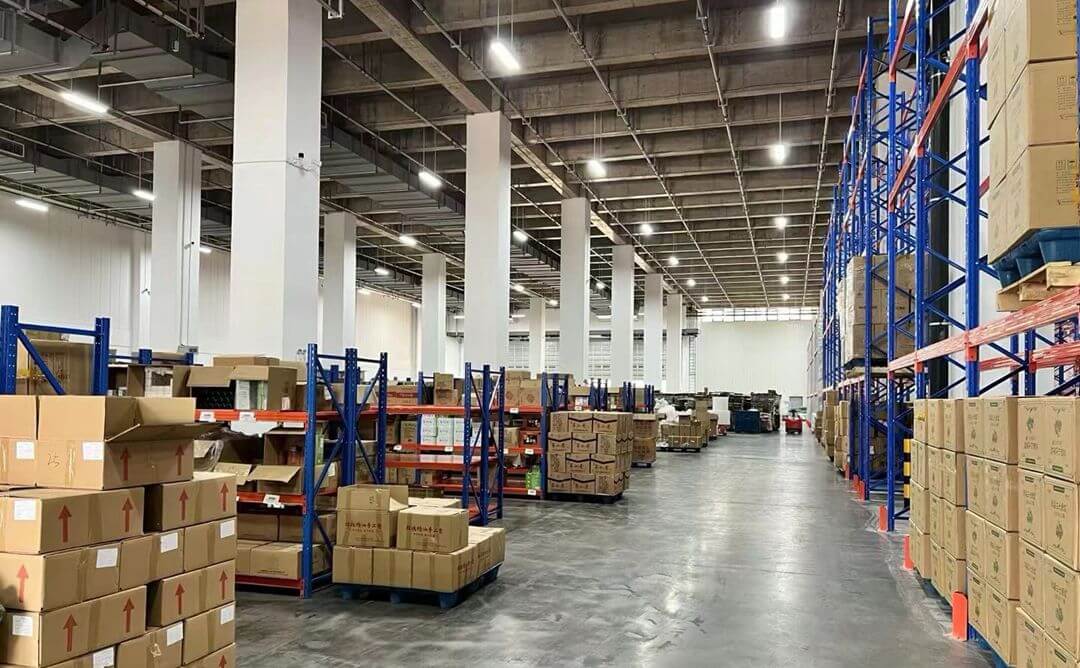
Warehouse Solutions
We provide effective warehousing, inventory control, and order fulfillment to strengthen your supply chain.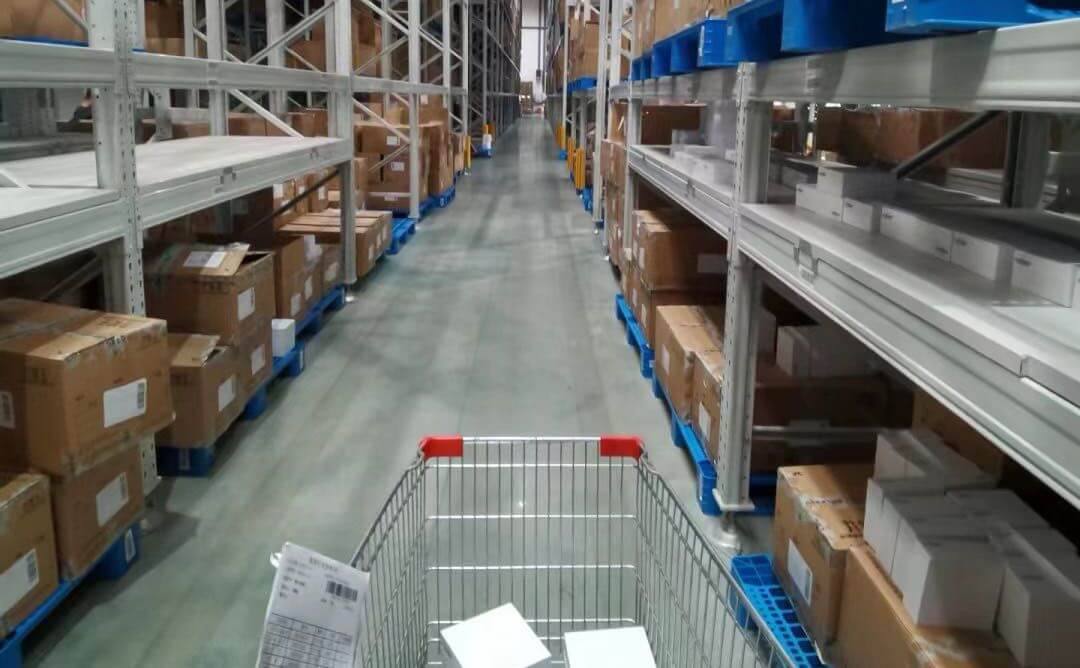
Customized Strategies
We organize transportation solutions that are fully customized to meet your unique needs.Why should you work with us for your sea freight from China?
We provide comprehensive supply chain management, pickup, consolidation, warehousing, picking, packing, and shipping, ensuring efficient storage, quality control, and order fulfillment. We focus on timely delivery while optimizing supply chain costs and efficiency.

Best Rate Guarantee
Our comprehensive services allow us to create optimized shipping solutions and save money.
Reduced Risk
Our expertise can handle complex customs processes, minimize delays, and ensure smooth, reliable shipments.
Simplified Operations
Our consolidation services combine multiple shipments into one, saving you valuable time and resources.
Worry-free Partner
Our experienced supply chain team provides strategic guidance beyond typical freight forwarding, giving you peace of mind.
Empower Supply Chain
Our comprehensive services improve efficiency, from coordinating suppliers and pickups to warehousing and final shipping.
Access Global Opportunities
Ship directly to your customers under your name, hide your supplier details, and protect your business secrets.
Grow with Confidence
We support you at every stage of your business, ensuring you have the tools and resources to succeed.
Beat Competitors
We empower you to store and deliver high-quality products more efficiently, giving you an edge in the global market.
Commitment to your freight
We take full responsibility for every step of the shipping process, ensuring your shipment arrives safely and on time.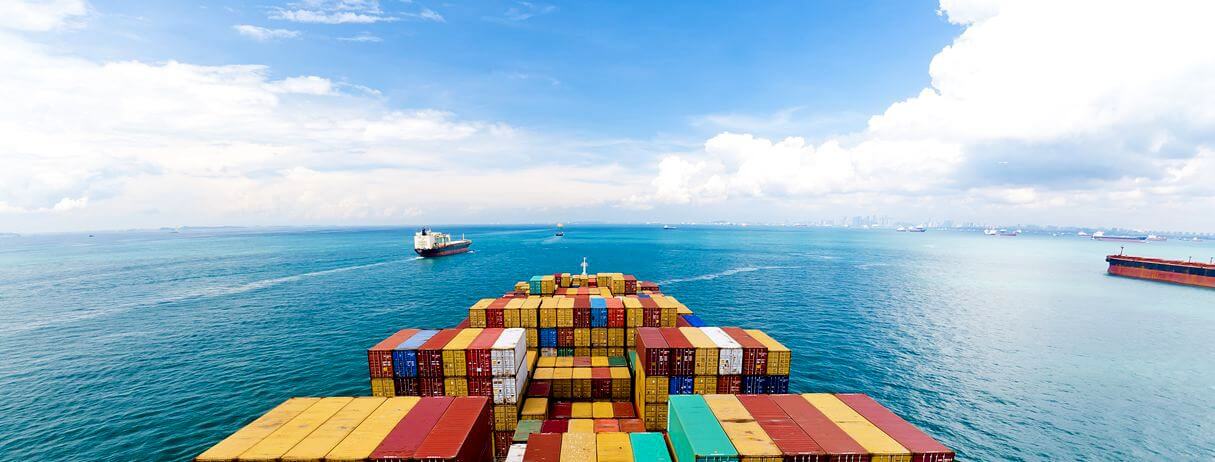
China Sea Freight's basic
What is China Sea Freight?
China sea freight refers to shipping using the ocean method. Different vessels and containers have to travel through the sea for shipping.
The excellent point is the lowest shipping price. However, you have to deal with the slowest shipping, which may not favor many businesses.
Comparison with other shipping methods (air, rail, road)
Sea shipping is comparable to the other options like air shipping. Here is a detailed review of the other options.
- Air shipping. It is fast and reliable. But the only disadvantage is the higher costs. For weights ranging from 30 kg to 100kg, air freight is a good choice.
- Rail freight. It is the in-between shipping method. The intermediate cost and speed also enhance its reputation. But China doesn't have railway tracks for shipping to all the countries in the world.
- The road. It is the best shipping option for local transport from one city to another. However, China has some road links with other countries. In that case, it can be a favorable choice.
Advantages and disadvantages of sea freight
Sea Freight can be a suitable choice. Wondering how? It comes with the following benefits.
Pros
- Cost-Effective. You don't need to invest a fortune. Sea freight offers the lowest cost per kilogram weight of your products.
- High-capacity. When you have to ship bulk inventory, rely on sea freight. It can ship hundreds of containers through sea freight.
- Extensive access. Don't worry about global access. The sea connects China with the whole world. That means you can grab the worldwide shipping without any thoughts.
- Slowest shipping. You have to wait for 20-30 days or sometimes more. Such slow shipping is toxic for your prompt shipping deals.
Types of Sea Freight Services
Sea freight has two key options— FCL and LCL. Here is the overview of both options.
Full Container Load (FCL)
Full container load is the complete container filling of the required sizes. It can range for a definite size. Usually, the container loads are 20GP, 40GP, and 40HQ.
- 20GP (20-foot General Purpose Container). It is 20 feet long in size overall. The capacity of the container is around 33.2 cubic meters.
- 40GP (40-foot General Purpose Container). It has doubled the size of the 20GP. The capacity of the container is 67.7 cubic meters.
- 40HQ (40-foot High Cube Container). There is a different variation of this container type from the above ones. The capacity is 76.3 cubic meters.
Less than Container Load (LCL)
When your inventory is less, you can't use the whole container. In such a case, less than a container load is the second best option. But there is a con. Suppose you fill the inventory in the 20GP container. It fills half. The shipping will only occur if the container gets filled.

Key Players in Sea Freight
If you are considering sea freight, there is much more to consider. Here are the crucial components involved in sea shipping.
Freight forwarders
A freight forwarder is often a company or individual that ships goods on behalf of shippers. Consider them intermediate agents between the shipper and various transportation services. With their assistance, goods transport becomes smooth and efficient.
Shipping lines
Shipping lines are companies that deploy their ships for transporting goods from one seaport to another. These companies often own the vessels and provide services to the shippers. Their role is quite crucial in maintaining the sea shipping between multiple countries.
Port Authorities
Port authorities are local port agencies that manage ports or a group of ports. From regulations to monitoring, they play a defined role in managing crucial port operations.
Customs brokers
A customs broker is a third-party agent that acts on behalf of shippers and assists them. It helps collect the documents and speed up the customs clearance processes. Custom brokers are impactful agents in international trade.
Major Chinese Ports
Central Chinese provinces facilitate the shipping from the ports. Some of the top Chinese ports are given:
Shanghai
Shanghai Port is located in the Yangtze River Delta in China. Considered one of the busiest ports, it serves as a hub for both container shipping and bulk cargo. The Port of Shanghai can handle 42 million TEUs annually.
Shenzhen
Shenzhen port is located in the south of the Pearl River Delta. Covering over 260 kilometers of trade, it serves as a major port for foreign trade. With a 27 million TEUs annual capacity, it features facilities for containers for more than 100 nations.
Ningbo-Zhoushan
Located on the East Coast across Shanghai on Hangzhou Bay, Ningbo-Zhoushan Port stands out as the busiest port for cargo shipping. It is a state-owned port that can handle 19 million annual TEUs. This port connects 90 countries to China.
Guangzhou
Guangzhou ports lie on the Dongjiang, Beijiang, and Xijiang rivers. It connects the industrial area of these locations and facilitates easy shipping to many countries. Concluding 23 million TEUs annual capacity, it makes shipping easier for cargo.
Qingdao
Qingdao Port is situated on the Yellow Sea and has created an impact globally. With a capacity of 22 million TEUs, it connects the shipping to 130 countries and 450 ports.
Tianjin
Tianjin Port, near Bohai Bay along the Haihe River, Tianjin facilitates multiple types of containers, cargo, and passenger vessels. With 18 million TEUs capacity, it connects 180 nations and 600 ports.

How to choose the best port for your shipping?
Never settle with an ordinary port as it may not suit your needs. Here are a few crucial features that you need to look for in selecting your favorite shipping port.
- Shipping capacity.High shipping capacity will ensure you can ship even if there is a rush. It avoids delays and ensures timely shipping.
- Efficiency and clearance. Processing efficiency is paramount to speed up your orders. Decreased efficiency will lead to delays in the delivery of the products and might turn out to be a painful journey. Therefore, choose a port with an active customs staff and faster processing.
- Proximity to your Supplier. In case the port is near your suppliers, then you save on fuel costs and eventually decrease the general shipping prices. Consider proximity when seeking a delivery company.
Sea Freight from China Procedure
Ready to start your journey for sea shipping from China? Here comes the following process.
1) Pre-Shipment Phase
Before you ship the products, consider the negotiation and shipping rates. We have already talked about what you need to do in the pre-shipment phase.
Negotiating with suppliers
Do the agreements. Settle the rates. Feel free to ask for the associated shipping facilities. Some suppliers have contacts with the shipping companies. Most often, the overall price of your inventory includes the shipping costs. That will save you from the extensive shipping prices and keep you on the safe side.
Choosing Incoterms
Incoterms outline the responsibilities of the suppliers and buyers. Some of the incoterms include:
- EXW
- FOB
- CIF
- DAP
- DDP
Many more incoterms define the price compensation in case of lost inventory or shipping issues. Be clear and read all the Incoterms before you agree to the terms. Choose the one that provides you with the perfect shelter for shipping and decreased responsibilities.
Selecting a freight forwarder or shipping line.
All decided? Be independent of the suppliers. If a supplier doesn't feature the shipping facilities, go the extra mile. Do your best and hunt down the best company.
Look for the following features in your favorite freight forwarders.
- Experience and shipping facilities.
- Guarantees for the timely shipping.
- Affordable Costs with accessibility to your destination country
- Real-time tracking facilities can be used to know the exact location of the products at any instant.
2) Booking Process
Now, let us land the booking process of your favorite freight forwarders. Here is a detailed discussion of the booking of your favorite shipping companies.
Requesting quotes
Get quotes from multiple shipping carriers. Relying on carriers can create a monopoly and might elevate the overall costs. Fetch quotes from multiple shipping carriers. Keeping 5-10 shipping carriers on your list is a good idea in this aspect.
Provide shipment details
Where do you want to ship? Send A to Z details about your shipments. Don't worry about mentioning the exact addresses.
Send the following details.
- Shipping Location
- Product specification, weight and volume
- Phone number
- Name
Confirming booking with the chosen provider
Have you submitted all the details? Have you agreed to the quotes? Arrange the final terms with the shipping company.
Close the deal with your chosen carrier. It is always better to sign the agreement and keep yourself away from hundreds of hassles.
3) Documentation Preparation
You need to work on documentation quite aggressively in cross-border shipments. Customs thoroughly verifies and confirms your documents.
The essential documents are:
Commercial Invoice
The commercial invoice includes all the details about your product purchase. Product description, value, and quantity are disclosed in the commercial invoices.
Packing List
Are you shipping more than one type of item? List all kinds of items and their packaging. Try to be an eco-friendly packaging lover, as it can save you from hectic tasks and bring in quick clearance.
Bill of Lading
Bill of lading is a crucial document that a carrier hands over to the shipper. It highlights the types, quantity, and destination of the goods being shipped.
Certificate of Origin
Where have your products been manufactured? Get a certificate from the manufacturing factories. Submit it when grabbing the clearance at the customs office.
Any product-specific certificates
Are you shipping electrical products? Any hazardous materials have to show off the safety certificates. For example, electrical devices require the FCC certification.
Remember, the certificates change from one country to another. The EU needs the CE certificates. While the US counts on different certifications.
4) Cargo Preparation
Cargo preparation starts once you have done all the above tasks.
Proper packaging
Packaging is quite impactful to create an excellent unboxing experience. It can elevate your fanbase as well.
- Make your packaging more branded.
- Ensure safety by adding multiple layers to your packaging.
- Confirm the safety by testing the material moisture, quality, and durability.
- Use eco-friendly packages to win the trust of your consumers.
Labeling
Labeling is as crucial as the packaging. The tips include:
- Make your label waterproof.
- Add the brand logo to promote your brand effectively.
- Attach the labels to a suitable place.
Container stuffing
LCL costs you for the product weight or volume. In the case of FCL shipping, there is good news. You can stuff the inventory effectively.
Typically, a 20GP FCL container holds a 28 cubic meter load. On the other hand, a 40GP handles a 58 cubic meter load. While a 40HQ can tackle a 68 cubic meter load.
5) Transportation to Port
Where is your port? Specify the location and then maximize your shipping with the following methods.
Inland transportation arrangements
Arrange the truck or domestic transport systems to arrange delivery of the products to the port. Usually, such things count on the supplier instead of the buyer.
Delivery to the port of loading
Pay the price for your shipping to the port and then confirm the delivery.
6) Export Customs Clearance in China
If you are shipping to the US, China is your export while the US is your import country. Clearance is necessary at import and export borders.
Consider the following aspects for the shipping
Submitting an export declaration
Now is the time to grab the export documents. From commercial invoices to bills of lading, extract all the crucial documentation from your directory. Submit it to the export customs and ensure clearance at the borders.
Obtaining necessary permits
Let's get straight to you with the necessary permits. Grabbing the clearance plays a crucial role. After verification, you can get the required licenses from customs.
Customs inspection
Export customs ensures you ship only the allowed products. They might take a comprehensive inspection to verify the safety of your products. Get your products inspected by the customs authorities effectively.
7) Port Handling
Once your products reach the port, they go through the handling process. It comes with the following steps.
Container placement in the yard
Container shipping doesn't occur at the given instant. Instead, your containers get stored until the sailing occurs on the vessels. Until then, the company will be able to monitor your products.
Insurance
Insurance can save you from mishaps. Keep yourself away from accidents and grab instant insurance opportunities. Select a top company that has the best insurance policy and quick reimbursement plans.
Loading onto the vessel
Once your containers are ready for shipping, loading occurs on to the vessels.
8) Ocean Transit
Now, the shipping journey starts from the origin to the destination. Let's take the following steps for the final delivery.
Vessel departure
Vessel ships on the final journey. Get insurance to secure your products and get the refunds in case of damage or accidents.
Tracking the shipment
Get the tracking ID from your shipping carrier. Trace the real-time location of your shipping vessel.
Communication with freight forwarders to get prepared
Track the orders and contact the freight forwarders. Make them ready to receive the goods being shipped through the sea freight.
9) Arrival at Destination Port
From Chinese ports to destination country ports, vessels arrive, and berthing and unloading occur.
Vessel berthing
Docking of the vessel refers to the berthing. Once your cargo reaches the port, it is anchored to the place. Workers can further move to the unloading containers.
Unloading of cargo
Workers remove the products from the cargo and give a temporary storage on the port. When further shipping occurs through the local transports, products remain at the port facility.
10) Import Customs Clearance
Import borders have a detailed inspection of your products. Customs gives a clean chit when your products meet their quality criteria.
Let's get the fastest route to customs clearance.
Customs brokers and their role
Custom brokers can assist you in the collection of the accurate data for the customs clearance. Involve them in the cross-border shipments and harness their benefits for your clearance.
Submitting import declaration
Submit all the documents from invoices to bills of lading. Upload the packing list on your customs websites.
Paying duties and taxes
Import duties are applicable to different products. Moreover, the criteria for payment varies from one country to another. Furthermore, customs charges for the inspection, too. Get ready to pay all the fees on the site.
.
Customs inspection
Customs will X-ray your products. You can clear your products if they match your declaration.
11) Final Delivery
After the products arrive in your destination country, the final shipping occurs at your destination address. Here is the detailed discussion.
Arranging inland transportation
From port to your doorstep, how does the delivery occur? Obviously, you must hire the local transport systems. Truck or trailer transports can take your products to your doorstep.
Receiving the goods at the final destination
Once products are in your region, get ready to receive them. Stay active with your phone numbers or contact the delivery agents for product reception.
12) Post-Shipment
Once you have received the products, come up with the following steps.
Confirming receipt of goods
Check the product quantity and quality, if they are the same as you expect.
Handling any claims or issues
Did you get the delayed shipping? Sometimes product quality doesn't correspond to the agreed ones. In that case, you must contact your suppliers and highlight the issues. Moreover, you can mention the defects or damages during the transit and claim reimbursement from the insurance companies, too.
Evaluating the shipping process
How was your shipping process? If you enjoyed the shipping experience and timely shipping, rate your freight forwarders. Be their long-term deal.
Transit times for sea freight from China
Transit times vary from China to other countries. A comprehensive look with detailed times include
1) Transit Times to North America
United States
The United States is quite famous for its extensive imports. It ships products from various provinces in China.
Here are a few shipping times in the US.
- East Coast requires 24-30 days for shipping
- West Coast considers 15-20 days of shipping
- Gulf Coast takes almost 20-25 days.
Canada
The average shipping time to Canadian buyers is 15-30 days. It varies depending on the city and country.
- Shipping to Vancouver takes almost 15-20 days.
- Shipping to Toronto takes 20-25 days.
- Shipping to Montreal takes around 25-30 days.
México
If you are considering shipments from China to Mexico, expect at least 25 days.
- Shipping to Manzanillo takes 18-22 days.
- Shipping to Lázaro Cárdenas takes 20-25 days.
2) Transit Times to Europe
United Kingdom
If you belong to the UK, shipping can be slow compared to the USA.
- Shipping to Felixstowe takes almost 28-35 days.
- Shipping to Southampton takes nearly 30-35 days.
Germany
Germany has almost a timeframe of 35 days for shipping from China.
- Shipping to Hamburg takes around 28-35 days.
- Shipping to Bremerhaven takes around 30-35 days.
Netherlands
The Netherlands has the same speed as Germany in the European regions. Shipping to Rotterdam takes around 28-35 days.
France
Almost all European countries feature the exact shipping time for product delivery from China. Shipping to Le Havre takes around 30-35 days.
Italy
If you are from Italy, get ready to double up your time. It takes almost 40 days or less for the product to arrive.
- Shipping to Genoa takes around 30-40 days.
- Shipping to Naples takes around 35-40 days.
3) Transit Times to Asia-Pacific
Japan
Japan has the fastest shipping from China. It takes a maximum of two weeks for the products to arrive at Japanese ports.
Here is how the time varies for shipping from China to Japan.
- Shipping to Tokyo takes around 7-10 days.
- Shipping to Yokohama takes around 7-10 days.
South Korea
Shipping to South Korea is fast, too. This is due to the proximity of the ports and quick shipping facilities. For example, shipping to Busan takes around 7-10 days.
Singapore
Singapore comes under the fast shipping journeys. A maximum wait of two weeks, and you're good to go for the transportation. Shipping to Singapore takes around 10-14 days.
Australia
After Japan and Singapore, guess the fast shipping route? It is none other than Australia. 20 days isn't a longer timeframe for the products to ship from China.
- Shipping to Sydney takes around 15-20 days.
- Shipping to Melbourne takes around 15-20 days.
New Zealand
Do you want to ship products to Auckland? Don't worry. It takes around 20-25 days to ship to Auckland through the seaports.
4) Transit Times to the Middle East
United Arab Emirates
UAE lies close to China. Moreover, a better sea connection with the UAE supports a fast shipping opportunity. A time frame of 25 days is sufficient to prove this point.
- Shipping to Dubai takes around 20-25 days.
- Shipping to Abu Dhabi takes around 20-25 days.
Saudi Arabia
Are you shipping from China to Saudi Arabia? Shipping to Jeddah takes around 20-25 days.
Israel
Shipping to Haifa takes around 20-25 days. It is also fast, like in other Arabian countries.
5) Transit Times to Africa
South Africa
Shippers take a month to ship from China to South Africa. You can calculate the average time as follows:
- Shipping to Durban takes around 25-30 days.
- Shipping to Cape Town takes around 30-35 days.
Egypt
If you are shipping to Egypt, consider a time of one month.
Here is the proposed shipping time.
- Shipping to Alexandria takes around 25-30 days.
- Shipping to Port Said takes around 25-30 days.
Nigeria
Shipping to Lagos, Nigeria, takes around 30-35 days.
Kenya
Shipping to Mombasa, Kenya, takes around 30-35 days.
6) Transit Times to South America
Brazil
Brazil has an average time of 35 days for shipping from China.
- Shipping to Santos takes around 30-35 days.
- Shipping to Rio de Janeiro takes around 30-35 days.
Argentina
Argentina is far away from China. Therefore, shipping is slower and takes around 40 days. For example, shipping to Buenos Aires takes around 35-40 days.
Chile
Chile is also distant from China. Shipping to Valparaíso takes around 30-35 days.
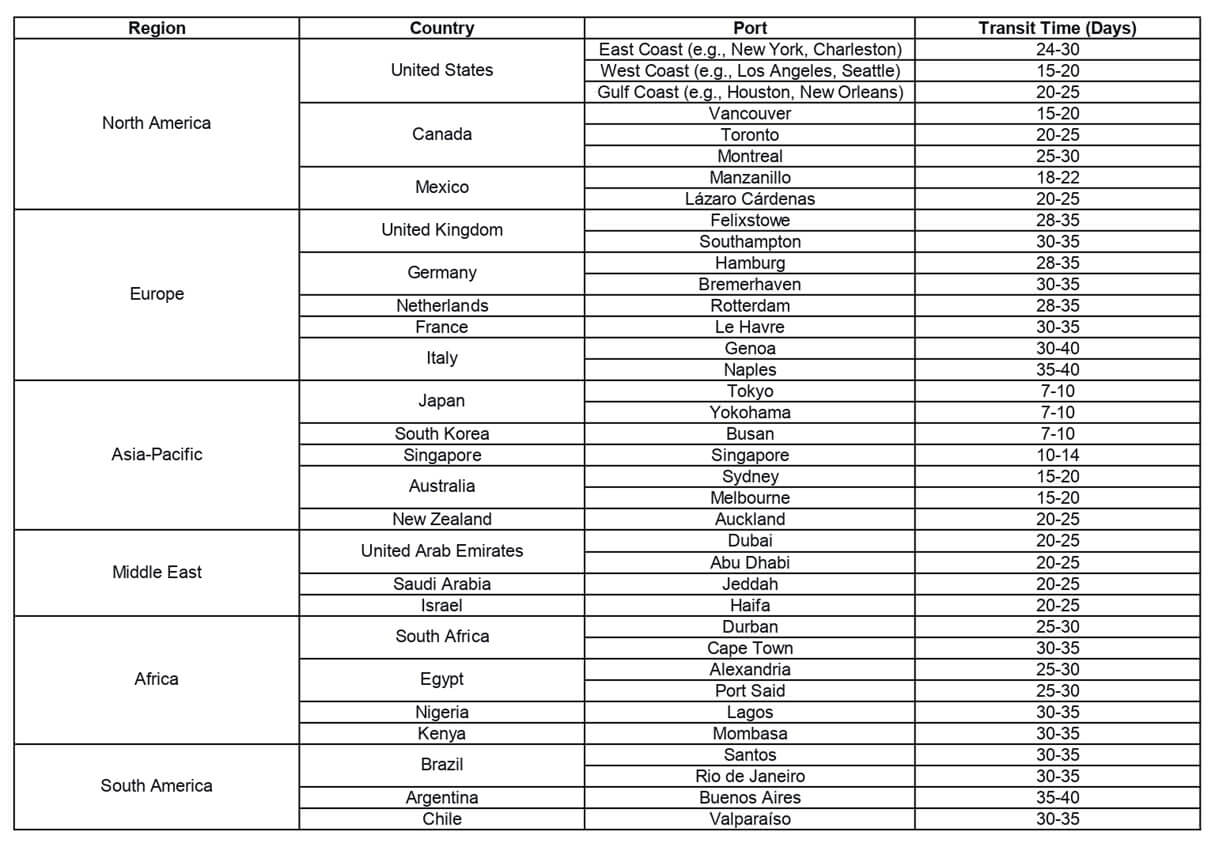
Sea freight shipping costs from China
Sea freight costs also vary from FCL to LCL. Moreover, FCL container type also matters. However, you must confirm the prices due to fluctuations in international costs and varying fuel prices.
We have added the fundamental rates for shipping sea freight from China.
1) Sea freight from China to the USA
Shipping costs from China to the USA vary based on the routes and shipping method. However, the sea freight depends more on the container size.
- 40ft Container: $3,500 - $5,500
- 20ft Container: $2,500 - $3,500
- LCL Price (per CBM): $300 - $400
2) Sea freight from China to Canada
Shipping from China to Canada comes in the range of 3-5K USD. LCL costs also vary from one forwarder to another.
- 40ft Container: $3,000 - $5,000
- 20ft Container: $2,000 - $3,200
- LCL Price (per CBM): $250 - $350
3) Sea freight from China to the UK
China to the UK shipping costs up to 6000 USD. The proposed prices are here.
- 40ft Container: $4,000 - $6,000
- 20ft Container: $3,000 - $4,500
- LCL Price (per CBM): $350 - $450
4) Sea freight from China to Sweden
Sweden is also far away from China. So expect the elevated costs for shipping.
- 40ft Container: $4,500 - $6,500
- 20ft Container: $3,500 - $4,800
- LCL Price (per CBM): $380 - $480
5) Sea freight from China to Europe
China to Europe also features the extended costs. However, costs vary from one European country to another. The average costs are as follows:
- 40ft Container: $4,200 - $6,200
- 20ft Container: $3,200 - $4,500
- LCL Price (per CBM): $350 - $450
6) Sea freight from China to Singapore
Singapore's shipping is cheaper and faster than that of other countries.
- 40ft Container: $1,200 - $2,000
- 20ft Container: $800 - $1,400
- LCL Price (per CBM): $100 - $150
7) Sea freight from China to Malaysia
China to Malaysia takes little time. Therefore, you can save costs on fuel and get reduced quotes from the freight forwarders.
- 40ft Container: $1,300 - $2,200
- 20ft Container: $900 - $1,500
- LCL Price (per CBM): $110 - $160
8) Sea freight from China to the Philippines
The Philippines isn't far away from China. FCL costs are less compared to similar regions in other countries.
- 40ft Container: $1,500 - $2,500
- 20ft Container: $1,000 - $1,700
- LCL Price (per CBM): $120 - $180
9) Sea freight from China to India
India is also a neighbor to China. So, shipping is less costly and fast.
- 40ft Container: $1,800 - $2,800
- 20ft Container: $1,200 - $2,000
- LCL Price (per CBM): $140 - $200
10) Sea freight charges from China to Sri Lanka
South Asian countries like Sri Lanka are in closer proximity to China. So the proposed costs are less compared to the far European countries.
- 40ft Container: $2,000 - $3,200
- 20ft Container: $1,300 - $2,100
- LCL Price (per CBM): $150 - $220
11) Sea freight charges from China to Pakistan
Pakistan also comes in the list of South Asian countries and is a neighbor to China. The average cost structure is as follows:
- 40ft Container: $2,200 - $3,400
- 20ft Container: $1,500 - $2,300
- LCL Price (per CBM): $160 - $230
12) Sea freight from China to Saudi Arabia
Saudi Arabia isn't far away from China. Get an average quote of 3000 USD when shipping from China to Saudi Arabia.
- 40ft Container: $2,500 - $4,000
- 20ft Container: $1,800 - $2,800
- LCL Price (per CBM): $180 - $250
13) Sea freight from China to Dubai
Chain to Dubai has a comparable cost to Saudi Arabia.
- 40ft Container: $2,400 - $3,800
- 20ft Container: $1,700 - $2,700
- LCL Price (per CBM): $170 - $240
14) Sea freight from China to Nigeria
China to Nigeria shipping costs are the same as those of the above regions.
- 40ft Container: $3,000 - $4,500
- 20ft Container: $2,000 - $3,200
- LCL Price (per CBM): $200 - $280
15) Sea freight from China to South Africa
Shipping costs for China to South Africa vary from one supplier to another. The prices are comparable with those of the US and European countries.
- 40ft Container: $3,500 - $5,500
- 20ft Container: $2,500 - $3,700
- LCL Price (per CBM): $250 - $330
16) Sea freight shipping time from China to Australia
Australia is in a different subcontinent. So, shipping prices are as follows:
- 40ft Container: $2,800 - $4,200
- 20ft Container: $1,800 - $2,800
- LCL Price (per CBM): $200 - $300

Challenges and Risks in Sea Freight from China
Sea freight comes with various risks. These are due to slow shipping mode with multiple containers in a single vessel. Here are a few risks to consider in this condition.
Common issues
The everyday challenges of sea freight are battling the product damages.
Here are typical issues you might land on.
- Product delays. Your shipping is often late due to vessel handling and other liabilities. So, you can't receive the products on time, and financial losses are considered due to increased backorders.
- Damage risks. Especially in LCL, your products cover a specific area in other containers. The compressive force implemented on your products can bring instant damage to your products.
- Loss of products. Multiple products shipping simultaneously causes confusion. The loss of shipping labels ultimately causes the misplacement or loss of the products.
Seasonal challenges
Peak seasons. Events. Holidays. All such cases are quite toxic for sea shipping. It is the first thing that gets blocked.
Here are a few Seasonal challenges in this case.
- Peak season. If there is peak shipping season, your shipping doesn't get sailed. So delayed deliveries are possible.
- Adverse weather conditions. Sea shipping is more prone to the weather conditions.
- Chinese New Year. Any national or international holidays also impact the sea freight first.
How do we mitigate risks?
Do you want to avoid delivery delays or come up with compelling shipping? Make it easy with the following tips.
- Slash your costs with the consolidated shipping services.
- Shipping during an off-peak season.
- Always consider the waterproof labels and unbreakable boxes.
- Look at the calendar. If there are events or holidays around, abandon shipping during that time.
- Work with reliable and efficient shipping companies. It can speed up your shipping process and enjoy the delivery in every condition.
How to Choose a Freight Forwarder?
If you are jumping into the selection process of a freight forwarder, forget all your hassles. We have got a few hacks power-packed with red flags.
Keep an eye on the following options.
Criteria for selection
Whenever selecting the freight forwarder, you must focus on the following features.
- Experience and Expertise must be of a decade.
- A high level of reputation is essential to bring in quality dealings.
- Global shipping networks help with the shipping process.
- Technology and communication can eliminate all the concerns and provide a better approach towards quality shipping.
- Bag the affordable costs from trusted freight forwarders.
Questions to ask potential partners.
Now, make your game up with the critical questions from your freight forwarders. Here is the list of crucial questions.
- How many years of experience do you have?
- How long does it take to ship a product from China to your destination country?
- Do you have multiple shipping options available to the buyers?
- Can I ship products to my doorstep?
- How do you ensure transparency in the deal?
- What is your cost of shipping to a specific location?
Red flags to watch out for.
There are a few more things to watch out for before opting for your favorite freight forwarder. Take a look at the following points.
- Poor communication. If a freight forwarder lacks communication skills, it can be a wrong deal. It is because of misconceptions and an inability to understand the exact terms and demands
- Bad reputation. Not all freight forwarders are best at shipping. Some have delayed shipping patterns and don't pay to the buyer's requirements. They often have a negative reputation. You should avoid them.
- No track record. A new freight forwarder doesn't have any track record. It can be a negative point. Try to avoid such freight forwarders.
- Meager shipping costs. Luring prices can cause scams. Watch out for all the meager costs and eliminate such freight forwarders from your list.
Tips for Optimizing Sea Freight from China
If you are considering optimizing your costs and shipping from China, here are a few key points to consider in such a case.
Cost reduction strategies
Don't you want to slash the shipping costs? Get the top tips and attend the cost reduction plans. For example:
- Choose FCL. You might wonder, but FCL has cheaper shipping. You ship bulk inventory at times with reduced prices. Amazing, right?
- Work with affordable carriers.Every carrier isn't good enough to handle your shipping. Look around and consider only the best suppliers. Check the affordability of the shipping.
- Choose a port closer to your destination. Choosing closer ports can save fuel costs. Therefore, shipping prices drop down to the ground.
Improving efficiency
Improve the shipping efficiency by:
- Work with the reliable shipping agents. They will promise the timely delivery.
- Consider the optimized packaging with extreme safety measures.
- Leverage technology to track your orders and receive them on time.
- Advanced booking can save you from the emergency hassles.
Building relationships with suppliers and freight partners
Building long-term relationships with the top suppliers and shipping agents opens doors to affordability. Shipping carriers want to win your confidence and become a long-lasting deal.
Therefore, they offer reduced prices and minimize costs by featuring fast shipping services. So, you'll avoid the incurring costs and keep yourself from the hassles of managing your orders.
Your China Import Success Story Starts Here. Find How We Can Help You Drive More Profit.
Ready to speak with an importing expert?
Please give us a call or e-mail.
+86-150-1926-7452
156+ Serving Countries Around the World
50+ China Sourcing and Shipping Masters On Staff
300+ Carrier and Forwarders Cooperating per Month
1,000+ Verified Manufacturers, Wholesalers, and Traders Dealing per Month
